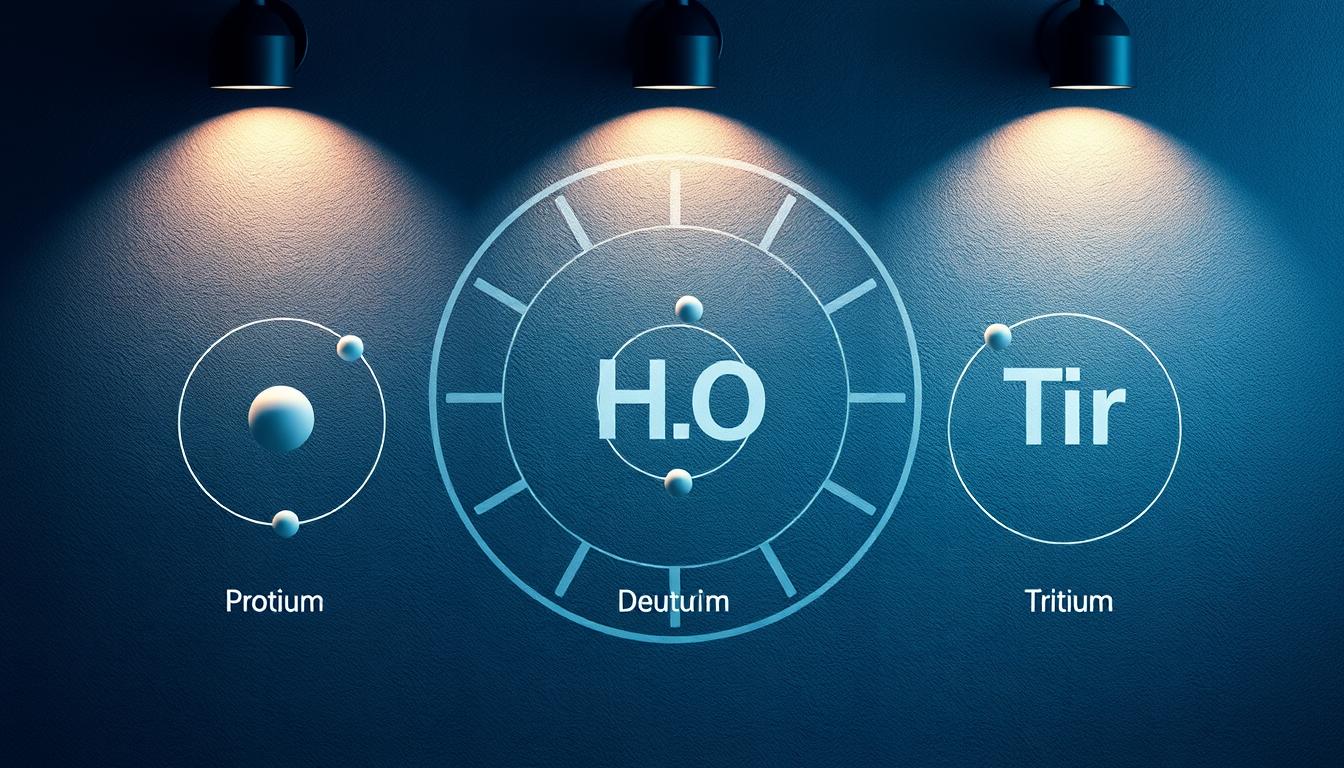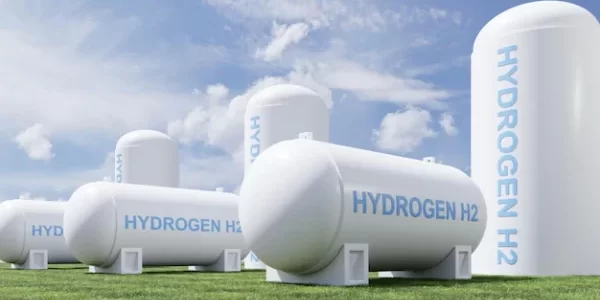Could the simplest element in the universe hold the key to future energy systems and everyday chemistry?
This article opens part one of a clear guide to the element with symbol H and atomic number 1. It is the lightest and most abundant substance in the element universe, with a standard atomic weight near 1.0080.

Under normal conditions it exists as diatomic H2, a colorless, odorless, and highly combustible gas with very low melting and boiling points. A key fact is that Henry Cavendish identified it as a distinct substance and showed it forms water on combustion; Antoine Lavoisier later named it called hydrogen or “water-former.”
This article frames how this simple element appears in water, organic compounds, and stars as plasma. We preview later sections on hydrogen production, storage, and practical uses so readers in the United States can follow a clear, fact-based path from basics to applications.
Key Takeaways
- Hydrogen is the lightest chemical element and makes up most normal matter in the universe.
- It normally appears as a diatomic gas that is colorless, odorless, and combustible.
- Standard atomic weight is about 1.0080; melting and boiling points are extremely low.
- Historical work by Henry Cavendish and Lavoisier shaped how the element was identified and named.
- This article is part one of a series that leads into hydrogen production and real-world uses.
Why Hydrogen Matters Today and in the Future of Clean Energy
As grids add more wind and solar, a flexible gas is emerging as a way to store surplus power and decarbonize hard-to-electrify industries.
Today, this gas supplies under 2% of Europe’s energy use and is mostly made from natural gas, which links its supply to CO2 emissions and legacy fossil fuels.
The EU aims to produce and import 10 Mt of renewable hydrogen by 2030 and sees renewable sources covering about 10% of energy by 2050. Those targets are part of Fit for 55 and the 2023 Renewable Energy Directive.
Why this matters: as a flexible energy carrier, hydrogen can store extra renewable electricity, serve as feedstock in steel and ammonia production, and power fuel cells for heavy transport and backup power.
Scaling will require synchronized investment in production, storage, transport, and standards so lifecycle accounting proves real climate benefits. Later sections of this article will detail policy, infrastructure, and technology pathways to make clean hydrogen cost-competitive and climate-aligned.
Hydrogen at a Glance: Definitions, Forms, and Standard Conditions
Understanding the distinct forms of this element clarifies why its behavior changes across conditions. Molecular hydrogen (H2) is the dominant form at standard conditions: a colorless, odorless, highly diffusive gas made of paired atoms. It is often called dihydrogen or simply hydrogen in everyday and technical texts.
Molecular hydrogen (H2) vs atomic hydrogen (H)
Molecular hydrogen (H2) is stable and common. Atomic hydrogen (H) is a transient, highly reactive single-atom species seen in plasmas or special experiments. Reactivity and spectral lines differ sharply between the two, so the distinction matters for spectroscopy and process chemistry.
Standard conditions, room temperature behavior, and physical state
Standard conditions usually mean 1 atm and about 0–25 °C. At room temperature the gas is diatomic, with a standard atomic weight near 1.008. Its low mass yields rapid diffusion and a high speed of sound (~1310 m/s at 27 °C), which affects leak detection and acoustic behavior in piping.
Physical Properties of Hydrogen Gas
At room conditions, this light diatomic gas shows a mix of extreme mobility and low mass that shapes its engineering uses.
Colorless, odorless, density and sound
Normal hydrogen is colorless and odorless with a very low density (about 0.08988 g/L at STP). It diffuses rapidly, which aids dispersion but complicates leak control.
The gas has a remarkably high speed of sound — roughly 1310 m/s at 27 °C — a key factor for acoustic detection and pipeline dynamics.
Melting, boiling and phase changes
The melting point sits near 13.99 K (−259.16 °C) and the boiling point at 20.271 K (−252.879 °C). These cryogenic thresholds arise from weak intermolecular forces and demand specialized insulation for liquefaction.
Approaching the boiling point requires careful boil-off management, vapor return systems, and robust cryogenic design.
Heat and thermal transport
Specific values help engineers: molar heat capacity is about 28.836 J/(mol·K), and thermal conductivity at 300 K is ~0.182 W/m·K and rises with temperature.
High thermal conductivity and heat capacity make the gas effective for heat transfer in some systems, while its low mass affects flow and mixing. Designers use per mole quantities to compute energy balances and size heat exchangers.
Atomic Hydrogen and Electron Energy Levels
Studying the simplest atom reveals why discrete energy levels produce the spectral lines seen in lab and space. The system is a single electron bound to one proton, and its quantized states set the rules for emission and absorption.
Ground state and the spectral series
The ground state energy is −13.6 eV, which corresponds to transitions that include ultraviolet photons near 91 nm. Electrons jump between quantized levels and create the well-known spectral series used in spectroscopy.
These discrete energy levels let scientists identify the element in stellar spectra and laboratory discharges. Converting to macroscopic units, multiply by Avogadro’s number to get values per mole for thermochemistry and engineering contexts.
Precision theory: corrections and splitting
Beyond the basic Schrödinger solution, high-precision predictions add the Dirac eigenvalue, relativistic recoil, self‑energy, and vacuum polarization. Those terms shift line positions slightly and test fundamental constants.
Hyperfine structure and practical uses
Each level also splits into hyperfine states. That splitting underpins radio astronomy, atomic clocks, and plasma diagnostics in flames and discharges.
Atomic hydrogen behaves very differently from molecular gas: it is far more reactive and recombines readily, so experiments must control surfaces and densities carefully.
Isotopes of Hydrogen: Protium, Deuterium, and Tritium
The element’s three natural isotopes shape everything from reactor physics to tracer studies. Protium (1H) is the dominant form, making up more than 99.98% of terrestrial samples; its nucleus is a single proton and the usual form of normal hydrogen.

Abundance, stability, and chemical effects
Deuterium (2H or D) is about 0.0145% of hydrogen. Its extra neutron doubles mass and changes reaction rates. Those mass differences cause measurable kinetic isotope effects in organic compounds and in spectroscopy.
Heavy water, reactors, and fusion relevance
Heavy water (D2O) uses deuterium to slow neutrons and serve as a moderator and coolant in some reactors. Deuterium also appears in fusion fuel concepts because its higher mass favors certain fusion pathways.
Tritium, exotic analogs, and nomenclature
Tritium (3H or T) is radioactive with a 12.32-year half-life and decays by beta emission to 3He. It is produced in reactors and used as a tracer and potential fusion fuel; safe handling focuses on containment and monitoring. Antihydrogen (an antiproton plus a positron) and muonium (an antimuon bound to an electron) act as exotic analogs that probe fundamental physics and test models of the hydrogen atom.
Note: IUPAC uses 2H/3H in formal contexts and D/T in applied fields such as NMR solvents and heavy-water discussions. Isotope ratios also inform geochemistry and hydrology, where small shifts record climate and water-cycle processes.
Combustion, Energy per Mole, and Greenhouse Gas Implications
Understanding how this gas burns helps engineers size equipment and design safety systems.
Chemistry and energy: The core reaction is 2 H2(g) + O2(g) → 2 H2O(l). Heat released is about −286 kJ per mole of H2, roughly 141.9 MJ/kg, figures used to size turbines, burners, and reformers.
Flame behavior and ignition
Flammability in air ranges from about 4–74% by volume; with chlorine it spans ~5–95%. Autoignition sits near 500 °C. Flames are faint blue/UV and can be nearly invisible in daylight, so dedicated flame detectors are essential.
Safety, emissions, and system design
High-pressure jets can autoignite from shock heating, so leak prevention and ventilation matter. Combustion produces no CO2 at the point of use, but upstream natural gas or carbon sources affect lifecycle greenhouse gas outcomes.
NOx and blends: High temperatures can form NOx; mitigations include staged combustion, lean premix designs, and exhaust treatment. Blending with natural gas changes flame speed and emissions and requires appliance recalibration.
Ortho-Para Hydrogen: Spin Isomers and Why They Matter
The nuclear spins of paired protons create two forms of the same molecule with distinct thermal behavior.
These spin isomers—ortho (parallel spins) and para (antiparallel spins)—have different rotational states and energy. At room temperature the equilibrium sits near 75% ortho and 25% para. The energy gap is about 1.455 kJ/mol, so conversion to the para form releases heat.
Temperature effects and liquefaction
Cooling shifts equilibrium toward the lower‑energy para form. During liquefaction, uncontrolled conversion raises tank temperature and causes boil‑off losses. Plants use catalysts such as ferric oxide and activated carbon to speed conversion before storage.
Engineering and safety implications
The ortho‑para ratio alters heat capacity and thermal conductivity of the gas, affecting cryogenic design and calibration for instruments like superconducting magnets. Spontaneous conversion can be slow without catalysts, and unexpected exotherms can increase pressure and venting risk.
Practical testing and supply‑chain impacts: measuring isomer composition helps operators minimize energy loss and validate liquefaction economics across transport and storage.
Liquid Hydrogen, Solid Phases, and Extreme States
At extreme cold or immense pressure, the simple element adopts phases that matter for storage, propulsion, and planetary science.
Liquefaction thresholds and the triple point
Liquid hydrogen forms below the critical point near 33 K; at 1 atm it requires about 20.28 K. The triple point sits close to 13.8033 K at 7.041 kPa, where solid, liquid, and gas coexist.
Slush mixtures—part liquid, part solid—raise volumetric density and can aid some rocket and storage designs.
Solid phases, metallic states, and plasma
Cryogenic phase diagrams show multiple solid forms (I–V) with different molecular packing. These phases affect material choice, insulation, and mechanical design at low temperature.
Under pressures above ~400 GPa, theory and some experiments indicate a transition to a metallic state with high conductivity. In stars, ionization creates plasma; that ionized matter powers fusion and luminous output.
Practical tradeoffs and safety
Liquefaction costs and boil‑off drive tradeoffs between cryogenic tanks and compressed gas or carriers. Melting point and boiling point values guide insulation and venting strategies.
Safety note: cold surfaces can cause oxygen enrichment and brittleness; proper vent design and calibrated instrumentation are essential for reliable operation.
Hydrogen Bonds, Organic Compounds, and Chemical Elements
Bonding to a small, light atom gives organic molecules much of their shape and reactivity. In common molecules it appears as a covalent partner, as a free proton (H+) in acid–base chemistry, or as a hydride (H−) in ionic reagents.
Hydrogen bonds between this atom and electronegative partners control water’s high surface tension, melting point, and solvent properties. Those same interactions stabilize protein folds and base pairing in DNA, so they are central to biology and materials design.
The atom is abundant in carbon compounds. In hydrocarbons and functional groups it sets bond strengths, acidity, and reactivity during substitution, elimination, and radical reactions. Molecular hydrogen and simple hydrides serve as reducing agents in synthesis, but hydride ions rarely survive protic solvents because they form H2 rapidly.
Catalytic hydrogenation and dehydrogenation link lab chemistry to industry. Selective catalysts, feed purity, and pressure control determine yields in fuel upgrading, polymer chemistry, and ammonia production. Understanding bonding energetics also guides membrane and electrolyte design for energy systems.
History of Discovery: From Paracelsus to Henry Cavendish and Lavoisier
Early observers noticed a flammable vapor when metals met acids. Paracelsus recorded such emissions, and Robert Boyle described iron filings reacting with dilute acids in 1671. These accounts set up later, quantitative work.

Henry Cavendish measured and characterized the inflammable air between 1766 and 1781. He showed burning the gas produced water, turning anecdote into measurable chemistry.
Lavoisier reproduced those experiments and gave the element the name that means “water-former.” He also made the gas by passing steam over hot iron (Fe + H2O → FeO + H2), an early high temperature redox route that foreshadowed industrial processes.
From simple setups to modern science
Later milestones include James Dewar’s 1898 liquefaction and the 1929 identification of ortho‑para spin isomers. These steps mattered for storage, low‑temperature physics, and safe handling.
Early studies of the hydrogen atom and its spectrum led to precise measurements of energy levels. That work connected chemistry to quantum theory and advanced spectroscopy.
Fact: the path from metal‑acid jars to engineering‑grade production shows how basic experiments evolved into today’s diverse production methods and applications.
Hydrogen Production Pathways: From Fossil Fuels to Renewable Energy
How we make the gas today sets the climate impact and costs of tomorrow’s energy systems. Most supply still derives from steam methane reforming of natural gas. SMR cracks methane, producing carbon monoxide and hydrogen, then a water‑gas shift converts CO to CO2 and more H2.
CO2 handling matters: plants often integrate capture systems to lower lifecycle emissions. Per mole stoichiometry guides reactor design and heat integration for reformers and shift units.
Electrolysis splits water using electricity. When powered by dedicated renewables and meeting RFNBO rules, it yields low‑carbon output. Grid‑tied electrolysis is more flexible but can raise lifecycle emissions depending on power mix.
Emerging hydrogen technology—high‑temperature solid oxide electrolysis, scaled PEM stacks, and methane pyrolysis—aims to cut costs and upstream carbon. Purity needs vary: fuel cells require tight specs, while ammonia synthesis tolerates different impurity levels.
Feedstock choices (freshwater, saline, or organic compounds from refineries) affect site selection and permitting. Policy and procurement rules now reward verified low‑carbon supply, shifting investment away from fossil fuels toward verified renewable energy pathways.
Storage, Transport, and Handling: Gas, Liquid Hydrogen, and Mixtures
Safe, cost-effective handling of this light fuel depends on matching form—compressed, liquid, or slush—to the intended use.
Compressed gas cylinders and tube trailers suit fueling stations and local distribution. They are simple to operate, have well‑established pressure classes, and use composite or steel vessels certified to DOT and UN rules.
Liquid hydrogen tanks offer higher gravimetric and volumetric density for long‑range transport and aerospace needs. Cryogenic insulation, boil‑off management, relief devices, and ortho‑para conversion catalysts are routine parts of plant and tank design.
Slush hydrogen raises storage density further by operating near the triple point, but it needs special refrigeration and handling to avoid phase-change losses and to maintain stable supply at low temperatures.
Mixture hydrogen blends into natural gas networks can reuse pipelines, but blends affect flame speed, leak detection, and appliance tuning. Materials selection matters: steels, elastomers, and polymers must resist embrittlement and high permeability.
Good handling practice includes forced ventilation, hydrocarbon‑rated detectors, grounding/bonding during transfer, trained operators, and adherence to setback distances and codes. Certification regimes for transport by road, rail, and ship guide logistics planning and insurance.
Practical tip: fueling stations often prefer compressed gas for response time, while large logistics or aerospace providers opt for cryogenic supply for energy density.
Applications: Fuel Cells, Ammonia, and Hydrogen Energy Systems
Real-world applications range from fuel-cell buses to high‑temperature furnaces in steel mills.
Fuel cells power vehicles and buildings with low local emissions. PEM stacks suit passenger cars and buses for fast response. SOFCs deliver high efficiency for stationary power and CHP. PAFC systems serve medium-scale backup and industrial plants. Purity matters: contaminants shorten catalyst life and cut system uptime.
Ammonia and industrial feedstock
Ammonia synthesis via Haber‑Bosch remains the largest single industrial use of hydrogen. Low‑carbon feedstock can slash fertilizer‑related carbon emissions and help meet agricultural targets. Hydrogenation of organics and carbon monoxide is routine in refining and specialty chemicals, where catalyst choice controls selectivity and throughput.
Logistics, heavy transport, and high‑temperature uses
Compressed gas and liquid hydrogen supply chains feed trucks, buses, forklifts, and aviation R&D. Liquid supply enables long ranges; compressed cylinders suit depot refueling.
At high temperatures, this fuel replaces natural gas in glass, kilns, and direct reduced iron for green steel. Modular fuel-cell systems also provide resilient backup power for data centers and hospitals with zero on-site CO2.
Sector coupling uses the gas to balance grids, make e‑fuels, and integrate carbon capture across value chains. Challenges remain: cost, standards, infrastructure, and training. Public procurement, pilot corridors, and OEM partnerships are helping close gaps and accelerate commercialization.
Policy and Market Signals: From July 2021 to March 2023 and Beyond
Policy moves in Europe since july 2021 gave markets clearer rules and investment signals for clean fuels. These steps link targets, lifecycle methods, and funding to real projects.
Global context and regulatory milestones
Fit for 55 (july 2021) launched the arc that led to the Renewable Energy Directive (2023) with binding targets and RFNBO criteria. Two delegated acts in June 2023 and a later 70% greenhouse gas savings threshold (8 July 2025) set eligibility for low‑carbon supply.
Lifecycle methods and financing
Lifecycle methodologies now standardize how renewable and low‑carbon hydrogen produced is counted. That clarity improves bankability and supports power purchase agreements and offtake contracts.
Scaling infrastructure and public‑private tools
IPCEIs (Hy2Tech, Hy2Use, Hy2Infra, Hy2Move), the Electrolyser Partnership target (17.5 GW by 2025), and the European Hydrogen Bank de‑risk projects and expand manufacturing. December 2021 guidance on gas decarbonization and the march 2023 joint declaration on R&D complement those efforts.
Takeaway: predictable policy, standards, and financing mechanisms accelerate deployment of hydrogen technology and unlock private capital — a model useful for U.S. policymakers and investors.
Hydrogen in the Element Universe: Abundance, Stars, and Natural Occurrence
Cosmic surveys show that roughly 75% of normal matter by mass is this light element, and it forms the bulk of stars as ionized plasma. In stellar cores, fusion of protons releases vast amounts of energy, driving stellar evolution and creating heavier elements over time.
On Earth, the element is mostly bound in water and organic molecules. Free H2 gas appears only in trace atmospheric amounts, in geological seeps, and as transient product of biological and geochemical reactions.
Natural isotope ratios are dominated by 1H, with small amounts of 2H (deuterium) and trace 3H. Those distributions inform climate proxies, planetary water cycles, and isotope studies in geology and astronomy.
Spectral lines from atomic and molecular transitions let astronomers map composition, temperature, and dynamics from radio to optical bands. Low molecular mass also promotes atmospheric escape, which is why most free atoms on Earth stay chemically bound rather than lost to space.
Takeaway: ubiquitous across the element universe and central to star power, this atom anchors both cosmic chemistry and the water‑based chemistry of life on Earth.
Hydrogen: Myths, Safety, and Facts at Room Temperature
Common questions about safety and visibility at ordinary temperatures shape public views and technical rules.
Flames and detection
Fact: flames from this fuel emit faint blue and ultraviolet light and can be nearly invisible in daylight.
Thermal cameras, UV sensors, and certified flame detectors provide reliable alarms where visual checks fail. That matters for stations, labs, and plants.
Common misconceptions and verified facts
The gas is colorless and odorless and disperses upward quickly outdoors because it is much lighter than air.
Its flammability range in air is about 4–74% by volume and autoignition is near 500 °C. Rapid dispersion can reduce outdoor hazard duration, but confined spaces increase risk.
Practical safety points: use ventilation, calibrated leak sensors, grounding, compatible materials, and routine inspection. Training and emergency protocols cut risk far below headline fears.
Compared with other fuels, hydrogen flames give low soot and lower radiant heat, but jet flames can have high velocity. Maintenance, sensor calibration, and standards make operations safe in the U.S. context.
Conclusion
To conclude, this article links core science to practical choices for future energy systems. You now see how basic properties — from quantum levels to cryogenic behavior — shape engineering, safety, and industry decisions. The summary shows where investment and policy can unlock value.
Today the role of hydrogen sits at the intersection of materials, catalysis, and infrastructure. Practical uses range from ammonia and hydrogenation to fuel cells and mobility. Safe, efficient deployment of this gas depends on standards, lifecycle verification, and trained operators.
Looking ahead, hydrogen energy will scale if markets align with verified low‑carbon supply and if technology lowers costs. Use this article as a reference for decisions that tie chemistry, policy, and markets into workable clean energy solutions.
FAQ
What are the basic properties and common uses of hydrogen?
At standard conditions this gas is colorless, odorless, and has very low density. It appears as diatomic molecules (H2) in most applications. Uses include fuel cells for electricity and mobility, ammonia production for fertilizers, petroleum refining, and high‑temperature industrial processes.
Why does this element matter for clean energy and future systems?
It stores and transports energy from renewable sources, supports grid balancing, and enables decarbonization of heavy industry and long‑range transport. When produced with low life‑cycle emissions, it helps reduce reliance on fossil fuels and cuts greenhouse gas output.
How do molecular (H2) and atomic (H) forms differ?
Molecular form (H2) is a stable diatomic gas found under normal conditions and used in energy applications. Atomic form (H) exists transiently at high temperatures or in plasmas and has different reactivity and spectral lines compared with the paired molecule.
How does the gas behave at room temperature and standard conditions?
At room temperature and 1 atm pressure the substance is a light, mobile gas that diffuses quickly and has high thermal conductivity. It remains gaseous well above its boiling point at 20.28 K, so cryogenic handling is required to liquefy it.
What are its melting and boiling points and what does that imply for storage?
The melting point is 13.99 K and the normal boiling point is 20.28 K. Those very low temperatures mean long‑term storage as a liquid needs cryogenic tanks and insulation; compression or chemical carriers are common alternatives.
What is the ground state energy of the hydrogen atom and why is it important?
The ground state energy of the single‑proton atom is −13.6 electronvolts. That well‑known value underpins quantum models, spectral series used in astronomy, and calibration of fundamental physical constants.
What corrections matter for precise atomic energy levels?
High‑precision values include relativistic (Dirac) corrections, nuclear recoil, electron self‑energy, and vacuum polarization. These small effects are essential in precision spectroscopy and metrology.
What are the main isotopes and why do they matter?
The three primary isotopes are protium (most abundant), deuterium (stable, used in heavy water and research), and tritium (radioactive, used in fusion and certain luminous devices). Each has distinct mass, nuclear behavior, and applications.
How is deuterium used in industry and science?
Deuterium appears in heavy water reactors as a neutron moderator, in isotopic labeling for chemical analysis, and in studies of reaction mechanisms. Its greater mass alters physical and chemical properties versus the light isotope.
What are the combustion characteristics and energy content per mole?
The reaction with oxygen releases significant heat; the lower heating value for one mole of diatomic molecules is about 286 kJ when forming liquid water. Flames can be nearly invisible in daylight and mixtures with air can be highly flammable or explosive.
What safety issues relate to flame behavior and autoignition?
The substance has a wide flammability range and relatively low ignition energy. Autoignition temperature varies with pressure and mixture but requires careful leak detection, ventilation, and ignition source control in facilities and vehicles.
What are ortho and para spin isomers and why do they matter?
Spin isomers differ by nuclear spin alignment in diatomic molecules, affecting internal energy and heat capacity. The ortho‑to‑para ratio depends on temperature and impacts liquefaction, storage boil‑off, and how catalysts are used to accelerate conversion.
When does liquefaction and solidification occur and what extreme phases exist?
Liquefaction occurs below 20.28 K under atmospheric pressure; the triple point lies nearby. At extreme pressure and temperature, exotic phases like metallic or ionized plasma states appear—relevant to planetary science and astrophysics.
How does it form hydrogen bonds and interact in organic chemistry?
As a light atom bonded to electronegative atoms like oxygen and nitrogen, it participates in hydrogen bonding that shapes water’s properties and biomolecule structures. It also forms covalent bonds in countless carbon compounds central to organic chemistry.
Who first identified and named this element and what does the name mean?
Early chemists observed gases from acids and metals, and Henry Cavendish characterized the gas in the 18th century. Antoine Lavoisier later named it based on the Greek meaning “water‑former,” reflecting its role in forming water when burned.
What are the main production pathways and their emissions profiles?
Common methods include steam methane reforming of natural gas with a carbon monoxide shift and water electrolysis powered by electricity. Emissions depend on feedstock and energy source; renewables or low‑carbon electricity produce the lowest life‑cycle greenhouse gas output.
What is steam methane reforming and how does carbon monoxide play a role?
Steam methane reforming converts natural gas with steam into synthesis gas (CO and H2); a water‑gas shift reaction then increases yield by converting CO and steam into CO2 and additional H2. CO removal and CO2 management are critical for emissions control.
How does electrolysis compare and what are RFNBOs?
Electrolysis splits water into gas using electricity. When powered by renewables, it yields low‑emission output. RFNBOs (renewable fuels of non‑biological origin) describe fuels made from renewable electricity and feedstocks, often used in regulatory contexts.
What storage and transport options exist for the gas and liquid forms?
Options include compressed gas cylinders, cryogenic liquid tanks, metal hydrides, and chemical carriers like ammonia or liquid organic hydrogen carriers. Choice depends on scale, range, energy density needs, and infrastructure constraints.
What are mixture considerations for use in combustion and engines?
Blending with natural gas or other fuels alters flame speed, ignition characteristics, and emissions. Engines and burners require calibration, materials compatibility checks, and sensor systems for safe operation with mixtures.
How do fuel cells convert this fuel into electricity?
Fuel cells oxidize the gas electrochemically at the anode, producing protons and electrons; protons pass through an electrolyte while electrons travel an external circuit to create power, recombining with oxygen at the cathode to form water.
What industrial applications use high temperatures and feedstock role?
High‑temperature processes include steelmaking, refinery hydrogenation, and ammonia synthesis. It serves both as a reactant for producing chemicals and as a reducing agent in metallurgical operations.
What policy and market developments since July 2021 matter for scaling?
Updates such as EU Fit for 55 and the Renewable Energy Directive (2023) advanced targets and certification frameworks. Funding, electrolyzer scaling, and lifecycle methodologies have accelerated investment through 2023 and into ongoing deployments.
Where does this element sit in the universe and stars?
It is the most abundant element in the universe, dominating stellar composition and driving fusion reactions in stars. On Earth it occurs in water, organic compounds, and geological reservoirs.
What common myths and safety facts should the public know at room temperature?
Flames can be hard to see and leaks diffuse rapidly due to low density; modern detection and ventilation mitigate many risks. Misconceptions include ideas that it is inherently more dangerous than other fuels—proper engineering controls make it safe for many uses.





